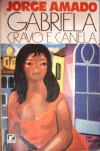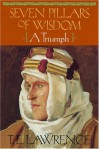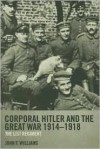Currently reading
A 'RARA AVIS' AMONG FLYERS


I have had a fascination with First World War aviation that goes back to 1977, when I received the Thomas R. Funderburk classic book 'The Fighters: The Men and Machines of the First Air War'. As time went on, in my readings I came across the name of a pilot in the Royal Air Force (RAF) noted for his remarkable skills in aerobatics who was entrusted with going from airbase to airbase across Britain showing pilot trainees and novice pilots alike that the feared and redoubtable Sopwith F1 'Camel' fighter could be mastered and flown skillfully by putting it through a variety of hair-raising, extremely low-level stunts. This was done to instill confidence in pilots to fly in combat an aircraft that could be unforgiving if indifferently flown. The name of this pilot, it was pointed out, was Armstrong.
Somehow the name 'Armstrong' stuck through the years. So that when I saw this book --- ''CAMEL PILOT SUPREME: CAPTAIN D.V. ARMSTRONG DFC" --- advertised recently, I thought 'this must be the one.' So I bought it and learned a great deal about D'urban Victor Armstrong that was amazing. Armstrong was born in South Africa in 1897 and arrived in Britain in the latter part of 1915 to join the Royal Flying Corps (RFC). He was trained as a pilot at the time when the RFC did not have a comprehensive and standardized pilot training program. The RFC, in the wake of the Fokker Scourge, had a desperate need for pilots and felt it more important to train men who could put a plane in the air and through their frontline experiences, fully learn 'the trade' of being a combat pilot on the Western Front. Pilots in 1916 on average were considered competent if they could last at least 3 weeks at the Front.
Armstrong, upon completion of training, was assigned to a new squadron, No. 60, which was dispatched to France in May 1916 flying both the Morane Saulnier N 'Bullet' monoplane fighter and the Morane-Saulnier Type L 'Parasol' high-wing monoplane which carried out photographic reconnaissance, escort, and bombing missions. Both planes were extremely tricky to fly. Notwithstanding that, No. 60 Squadron would go on to use them to great effect during the Battle of the Somme. Armstrong became quite proficient in flying the 'Bullet' in combat, scoring a number of kills with it in aerial combat. With the end of the battle in November 1916, Armstrong was one of only 5 men in the squadron to have survived unscathed. He was sent back to Britain, where for the next year and a half, he was involved with ferrying new combat planes across the Channel for use with frontline units, as well as serving in a couple of Home Defense fighter units pioneering both daylight and night flying tactics to combat the German long-range bombers that began flying bombing missions against London and targets in Southeast England during the spring and summer of 1917.
It was also during 1917 that Armstrong first became acquainted with the Sopwith F1 Camel, which first flew with fighter units on the Western Front in June of that year. Armstrong learned all that he could about the plane's idiosyncrasies by testing the plane itself. By this time, he was gaining a reputation as one of the RFC's best pilots. As a result of his growing prowess with the Camel, Armstrong's superiors in the RFC entrusted him with showing that it could be flown safely and inspiring confidence in those pilots who would later fly the Camel in combat.
Armstrong would return to France in late June 1918 with one of the RAF's first night fighter squadrons (flying Sopwith Camels), who would go on to pioneer tactics that would later be used in the Second World War to even greater effects by RAF night fighters in that conflict.
The more I read this book, the more I was deeply impressed with D.V. Armstrong, his unselfish nature and willingness to teach pilots all that he knew about aerobatics, as well as night flying and fighting. For the author, this book was the result of a 30 year effort to acquire and synthesize all that D.V. Armstrong -- who sadly died all too young -- was to the generation of aviators who knew him and valued his contributions to flight.
The book also has lots of photos from Armstrong's own collection that will give the reader a real sense of what a truly remarkable and special pilot he was. I recommend "CAMEL PILOT SUPREME: CAPTAIN D.V. ARMSTRONG DFC" to anyone who loves reading uplifting and inspiring stories.













